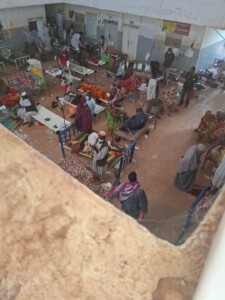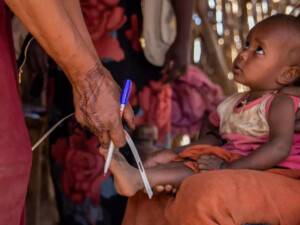Number of diarrhoeal disease cases growing in Sudan
The death toll of diarrhoeal diseases in Blue Nile state has reportedly risen to 23. In eastern Sudan two people are dying each day since mid-August. In El Gezira six people died of the disease last week. Medics warn for the spread of cholera.
The death toll of diarrhoeal diseases in Blue Nile state has reportedly risen to 23. In eastern Sudan two people are dying each day since mid-August. In El Gezira six people died of the disease last week. Medics warn for the spread of cholera.
At least 628 people are suffering from diarrhoeal diseases in Blue Nile state, medical cadres told reporters in Ed Damazin on Sunday.
The disease is rampant in Blue Nile state. The authorities have turned the El Damazin locality’s Legislative Council building into a hospital to receive the increasing number of patients. Most of the cases come from El Roseires, Ganeis, northern El Kurmuk, and Abu Gumi, the medics said.
MP Abdeljalil Abdelsayed Hakim confirmed that the hospitals in Ed Damazin and El Roseires are still receiving large numbers of new patients.
However, the secretary of state of the federal Health Ministry, reported in Khartoum on Sunday that the number of watery diarrhoea cases in Blue Nile state has begun to decrease, “as a result of the deployment of 200 technicians to ensure the safety of drinking water sources”.
El Gezira, Sennar
In Wad Madani, capital of the central Sudanese El Gezira state, six people died of diarrhoea last week.
The Emergency Department of the Wad Madani Hospital revealed in a report last week that 21 people out of 217 patients died during the Eid El Adha holiday.
In Sennar, the Ministry of Education and the University of Sennar have postponed the start of the lessons after the Eid El Adha for another week, for fear of “further spreading of watery diarrhoea among the students”.
A medical doctor told Radio Dabanga that the hospital in the capital Sinja became overcrowded over the weekend, where a ward was specified to receive diarrhoea cases. He said that many new cases came from the area of El Ramash.
The Sennar Health Ministry has ordered all health personnel to stand ready to treat the disease.
“Blue Nile state is entirely infested with cholera.”
Cholera
A survey conducted by doctors of the Democratic Unionist Party in Blue Nile, Sennar, and Kassala, points to the high mortality rates owing to diarrhoea among children and the elderly in the three states. Two people are dying daily since mid-August. At least 2,345 people suffer from acute diarrhoea.
In a statement, the doctors’ group classified Blue Nile state as “a region entirely infested with cholera”. They further accused the Sudanese government of covering up the epidemic. They demanded the authorities to declare the State of Emergency in eastern Sudan.
Former Blue Nile state governor and head of the Sudan People’s Liberation Movement-North, Malik Agar, described the negligence of the authorities regarding the diseases as a “gross crime” in a statement on Saturday.
He urged international, regional, and Sudanese organisations to intervene and provide assistance to the patients, and “openly report the number of cholera cases”.
In neighbouring South Sudan, Unicef reported that as of 25 July, a total of 294 suspected cholera cases including 17 deaths have been reported nationwide. The South Sudanese Minister of Health has advised partners to treat the recent rise in suspected cholera cases as a cholera outbreak, and respond accordingly.
Poor hygiene
Acute watery diarrhoea may last several hours or days, and includes cholera.
Acute watery diarrhoea is most commonly seen with traveller's diarrhoea caused by enterotoxigenic E. coli (ETEC) or parasite-induced diarrhoea from Giardia. Cholera is an acute diarrhoeal infection caused by ingestion of food or water contaminated with bacterium Vibrio cholera. It can kill within hours if left untreated.
Diarrhoeal infections are spread through contaminated food or drinking-water, or person-to-person as a result of poor hygiene. The spread can be prevented through early detection and confirmation of cases, followed by appropriate response.











 and then
and then